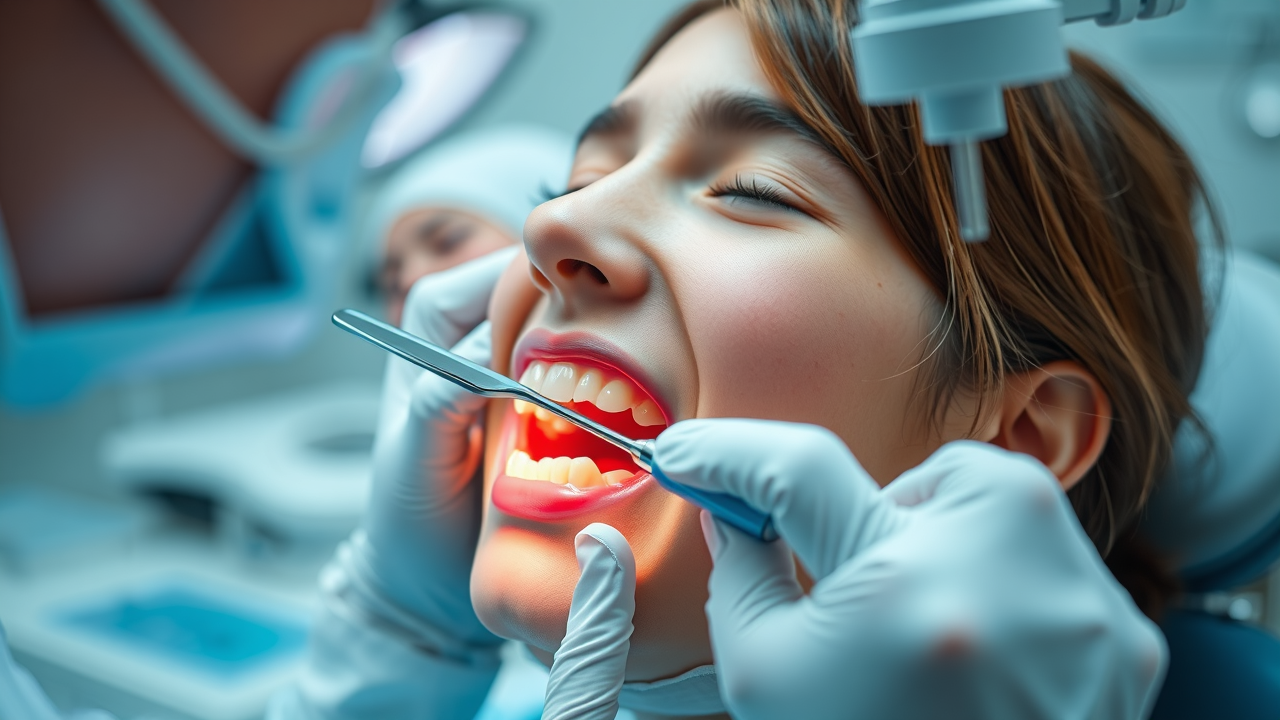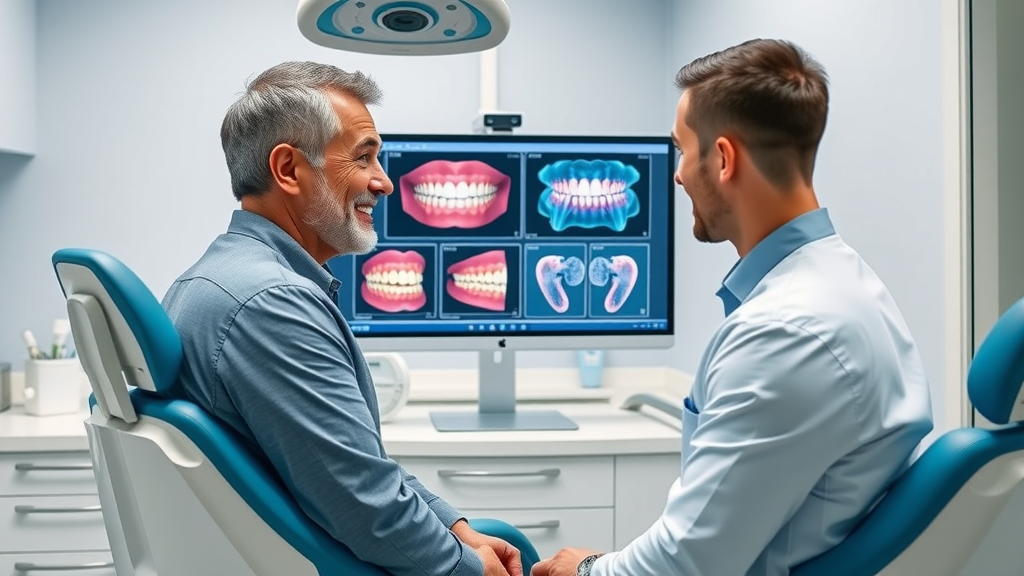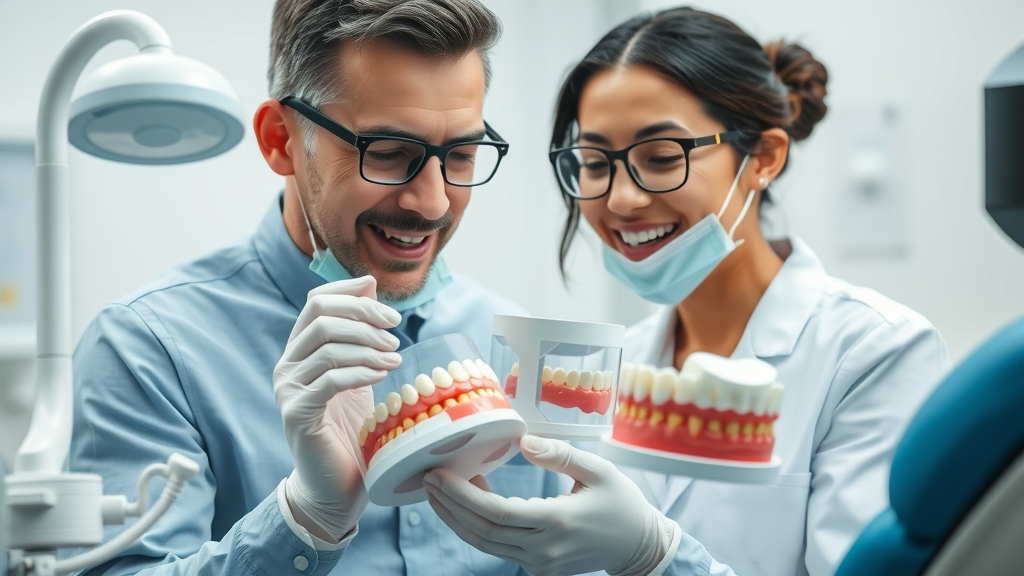Curious about what happens during your first orthodontic appointment? Whether you’re a parent bringing in your child or an adult seeking a beautiful smile, knowing what to expect can make the process less daunting and more exciting. Let’s unravel the step-by-step details, answer your biggest questions, and help you walk into the orthodontic office with total confidence!
Curiosity Unveiled: What Happens During Your First Orthodontic Appointment?
Discover the essential stages of your first orthodontic consultation, from paperwork to forming a personalized treatment plan.

What You'll Learn at Your First Orthodontic Appointment
Understanding the orthodontic appointment process
What to expect in terms of duration and procedures
How orthodontic consultations contribute to starting orthodontic treatment
Common concerns addressed at a first-time orthodontic appointment
The Initial Welcome: Checking In and Patient Intake
The very first step in your orthodontic appointment is a warm welcome at the front desk. As you step into the bright, inviting lobby, you’ll meet a friendly receptionist who guides you through the patient intake process. This is where the journey to a straighter, healthier smile officially begins. Here, you’ll be asked to complete some simple forms and provide your dental insurance information. Arriving a few minutes early can help make this process smooth and unhurried, setting a calm tone for your whole visit.
During this stage, the staff reviews any medical and dental history you provide. They may ask you about allergies, past dental issues, surgeries, or ongoing treatments. These details are important for your future orthodontic treatment plan. Accurate information helps the orthodontist understand your needs, anticipate any concerns, and tailor a safe, effective care plan. Be honest—every piece of info helps ensure your comfort and safety throughout your orthodontic journey.
Patient Forms and Medical and Dental History Review
Importance of medical and dental history: Your medical and dental history shapes the direction of your treatment, helping your orthodontist catch potential issues and avoid conflicts with existing conditions.
Documents and forms to bring: Previous dental records, a list of current medications, and insurance cards help avoid delays and streamline everything.
Common questions during your first appointment: Expect inquiries about past dental experiences, family dental health, and any concerns with your teeth and jaw. Being prepared with this info makes you an active part of your orthodontic consultation.
Comprehensive Oral Examination and Diagnostics
After your initial check-in, the next big focus is a thorough oral exam. This is when your orthodontist examines your teeth, gums, and bite. The goal is to assess your current oral health and identify any areas that may need attention as part of your treatment plan. You’ll be asked to sit comfortably while the orthodontist examines your mouth and checks how your teeth and jaws fit together. Sometimes, they’ll use a small dental mirror or explorer tool, ensuring nothing gets overlooked in this all-important assessment.
Beyond a simple look-in-the-mouth, your first orthodontic appointment may involve advanced imaging: X-rays, digital photographs, and possibly a digital scan of your teeth. These tools help the orthodontist see what’s happening beneath the surface, spot alignment issues, and plan your treatment. The process is comfortable and quick—modern dental technology means less waiting and more precision in planning just the right next steps.

Oral Exam: What the Orthodontist Looks For
During your oral exam, the orthodontist checks for things like crooked teeth, bite problems, spacing issues, and signs of tooth wear. Comprehensive oral examination means the orthodontist will gently assess how your upper and lower teeth fit together, the health of your gums, and the overall function of your teeth and jaw. This is the foundation of your customized treatment plan. If your bite doesn’t align or certain teeth are trapped or rotated, these observations guide the orthodontist’s recommendations for braces, aligners, or other treatment options.
This detailed assessment of oral health helps answer the big question: how can we create a functional and beautiful smile just for you? The results pave the way for a roadmap to straighter teeth, better function, and more confidence. For many, this is the exciting start of their orthodontic journey!
X-Rays, Photographs, and 3D Scans: Tools for Your Orthodontic Consultation
Purpose and process for photos/X-rays: Photos show the starting point, while X-rays reveal hidden issues like impacted teeth or jaw growth problems.
Diagnostics shape your plan: These images help the orthodontist create a personalized treatment plan that matches your unique needs, using all the information for best results.
What to expect: Most imaging is quick and comfortable. You may wear a lead apron for X-rays, and for digital scans, you’ll simply bite down on a handheld wand that captures a 3D image—no gagging or goopy impressions!
One-on-One with the Orthodontist: Your Oral Health Assessment
Next, you’ll meet your orthodontist for an in-depth discussion. This is your chance to have all findings explained in everyday language. The orthodontist will review what they observed during your oral examination and diagnostics, using photos or 3D scans to show any issues with your teeth and jaws. This conversation goes beyond technical facts: your orthodontist wants to understand your goals, lifestyle, and concerns—making it a truly personalized treatment experience.
Feel free to ask questions or share any worries. The best orthodontic consultation is more like a teamwork session: you, the orthodontist, and their staff working together toward your healthiest, most confident smile. Whether you’re a teen, an adult, or a parent guiding your child, this moment is all about lasting reassurance and clarity.
Oral Examination, Bite Assessment, and Treatment Option Discussion
During this meeting, you’ll learn about the cause of any dental issues and get a rundown of possible treatment options. Your orthodontist will explain differences between braces, clear aligners, and other devices that can move your teeth and jaw into better alignment. Expect to discuss the benefits, challenges, and likely timelines for each treatment option.
This is a judgment-free zone—don’t be afraid to talk about any fears (like the look of braces, potential discomfort, or cost of treatment). Personalized treatment means the orthodontist listens to your concerns and prefers solutions that fit your lifestyle, not a one-size-fits-all approach. This part of your orthodontic appointment is truly empowering.
Addressing Concerns: Questions to Ask at Your Orthodontic Consultation
Common concerns for parents and adults: How long will treatment take? Will it hurt? How visible will it be?
Tips for effective communication: Write down your questions in advance. Share your anxiety or past experiences—knowing your story helps the orthodontic team provide better care.
Key questions to ask: “What are my treatment plan options?” “Are there less noticeable braces or aligners?” “How much will it cost, and what payment options are available?” “Is my dental insurance accepted?” These questions help you feel in control as you begin orthodontic treatment.
Orthodontic Treatment Options at First Appointment |
|||
Treatment Option |
Effectiveness |
Visibility |
Cost Range |
|---|---|---|---|
Traditional Braces |
⬤⬤⬤⬤⬤ |
Visible (metal brackets/wires) |
$$ – $$$ |
Ceramic Braces |
⬤⬤⬤⬤⬤ |
Less visible (tooth-colored brackets) |
$$$ – $$$$ |
Clear Aligners (e.g., Invisalign) |
⬤⬤⬤⬤⭘ |
Virtually invisible, removable |
$$$ – $$$$$ |
Lingual Braces |
⬤⬤⬤⬤⬤ |
Completely hidden (behind teeth) |
$$$$ – $$$$$ |
Reviewing Your Personalized Orthodontic Treatment Plan
Armed with exam results and your unique goals, your orthodontist will create a personalized treatment plan. This might happen at the first visit, or after all diagnostic records are reviewed. The treatment plan includes which appliance or treatment options suit your needs, the estimated timeline, and step-by-step recommendations for every phase of your orthodontic treatment. They’ll discuss potential milestones, like when you might begin treatment, expected visits, and what outcomes to look forward to.
You’ll receive clear explanations about what’s involved, how your teeth and jaw will move, and how to keep your oral health in top shape during treatment. This open dialogue ensures everyone—parent, child, or adult—feels fully informed and prepared.
How the Treatment Plan is Developed During Your Orthodontic Appointment
To build your treatment plan, your orthodontist combines findings from your oral exam, X-rays, digital scans, and all the detailed info from your patient forms. They might use advanced computer simulations to show how your smile will transform. The plan takes into account your medical and dental history, everyday habits, and your unique goals, resulting in recommendations custom-built for you. Each step is explained in simple language, fostering trust and long-term success.
This focus on personalization means that even two patients with similar dental issues could have very different treatment paths. Your orthodontic consultation will feel entirely your own.
Timeline and Setting Realistic Expectations for Orthodontic Treatment
What factors influence your treatment plan? Age, severity of dental issues, your oral health, commitment to home care, and the choice of appliance all play a part in how your treatment process is mapped out.
Possible phases: Planning, early intervention (for young patients), active tooth movement, and retention (after braces come off).

“Your first orthodontic appointment is about understanding your smile and building a path to confident results — not just getting braces.” — Dr. Lee, Board-Certified Orthodontist
Financial Consultation: Insurance, Payment Options, and Next Steps
No orthodontic appointment is complete without a conversation about the financial side. Meeting with a treatment or financial coordinator ensures every patient understands the cost of treatment, available payment options, and dental insurance details. This is another moment to ask questions: What will insurance cover? Are flexible payment plans available? Will there be any out-of-pocket costs?
A clear discussion builds confidence and helps you plan ahead. Many practices work closely with families to fit orthodontic care into any budget, offering financing options and supporting paperwork for claims. Transparency is key—and it’s okay to ask for every detail until you feel fully comfortable!

Explaining Insurance Coverage During Your First Orthodontic Consultation
During your first orthodontic consultation, office staff will review your dental insurance policy. They’ll help you understand what’s covered, what isn’t, and what’s required for pre-approval if necessary. Bringing your insurance information speeds up this process. Don’t hesitate to ask for an estimate or written summary regarding coverage; knowing the financial landscape helps eliminate surprises and allows you to focus on your orthodontic journey with peace of mind.
It’s perfectly normal to be unsure about terms or instructions, so ask the coordinator to break things down clearly. This ensures you know exactly what is expected financially before you begin treatment.
Flexible Payment Options and What to Expect Financially
Questions to ask: Is there a no-interest payment plan? What’s the initial deposit? How are payments set up (monthly, quarterly, etc.)? What happens if my financial situation changes during my orthodontic treatment?
Overview: Many offices offer a choice of payment options, including insurance billing, cash, credit cards, and in-house or third-party financing options. Don’t be afraid to voice concerns—teams are dedicated to helping you access care without financial stress.
After the First Orthodontic Appointment: What Comes Next?
Booking follow-up appointments: Before you leave, staff will schedule your next visit—whether it’s for starting braces, placing spacers, or doing additional scans.
When treatment begins: Most patients start orthodontic treatment within days to a few weeks after their initial consultation, depending on planning and insurance approval.
Still have questions? Call or message your orthodontic office anytime. Teams are happy to review plans, clarify insurance, or address lingering concerns as you step confidently into your orthodontic journey.
People Also Ask: First Orthodontic Appointment FAQs

What to expect at the first orthodontist appointment?
Expect a welcoming introduction, a review of your medical and dental history, a comprehensive oral examination and diagnostics (like X-rays and digital photos), a discussion of possible treatment and payment options, and time to have all your questions answered before moving forward with care.
How long after your first orthodontist appointment do you get braces?
Most patients wait a few days to a few weeks before starting orthodontic treatment after their initial consultation. The timeline depends on how quickly diagnostics are completed, your insurance approval, and your personalized treatment plan.
How long is a first orthodontist appointment?
Your first orthodontic appointment usually lasts about 45 to 90 minutes, depending on case complexity and the office workflow. This time allows for a thorough exam, diagnostic imaging, planning, and detailed Q&A.
Do you get spacers on your first orthodontist appointment?
Not always. Spacers are usually placed if needed during a later visit, after your orthodontist reviews your treatment plan and determines if they’re required for placing braces or expanders.
Checklist: How to Prepare for Your First Orthodontic Appointment
Bring previous dental/medical records
Have your insurance information ready
List questions or concerns you want addressed
Arrive a few minutes early to complete paperwork without rushing

FAQs About What Happens During Your First Orthodontic Appointment
Is orthodontic treatment painful? You may feel a little pressure during some exams or when appliances are first fitted, but pain is very rare at the first visit.
Will I make decisions at the first visit? Yes—your input is vital. While some plans are set at the second appointment, your preferences are always respected.
Can parents or guardians attend the consultation? Absolutely! Parents are encouraged to attend, ask questions, and stay involved throughout the treatment process.
How do I choose the right orthodontic treatment? Ask about all treatment options, compare benefits and visibility, and discuss what fits your lifestyle and budget. Your orthodontist is your guide—and your partner—on this journey!
Key Takeaways: What Happens During Your First Orthodontic Appointment?
Expect a thorough, personalized experience focused on comfort and education
Gain a clear understanding of your oral health and treatment options
Have transparent financial discussions and supportive staff guidance
Enjoy the opportunity to ask any questions before you start your orthodontic journey
Conclusion: Your Path to a Confident Smile Starts at Your First Orthodontic Appointment
Your first orthodontic appointment sets the stage for your orthodontic journey—be informed, ask questions, and embrace the process with confidence.
Take the Next Step: Stay Informed and Confident About Your Orthodontic Care
Your smile is worth it — and staying informed is the first step. Join hundreds of locals already following Grand Strand Smile Spotlight for updates, advice, and trusted care insights.
Embarking on your orthodontic journey can be both exciting and a bit nerve-wracking. To help you feel more prepared, here are two authoritative resources that provide detailed insights into what to expect during your first orthodontic appointment:
The American Association of Orthodontists offers a comprehensive guide titled “What Happens at Your First Orthodontic Appointment?” This resource outlines the key steps of the initial consultation, including the importance of medical and dental history, the examination process, and the development of a personalized treatment plan.
For a more localized perspective, “What Happens at Your First Orthodontist Appointment?” by Newmarket Orthodontics provides a step-by-step breakdown of the first visit, emphasizing the significance of diagnostic records and the discussion of treatment options.
These resources will equip you with a clear understanding of the initial steps in your orthodontic care, ensuring you approach your first appointment with confidence and clarity.
 Add Row
Add Row  Add
Add 




Write A Comment